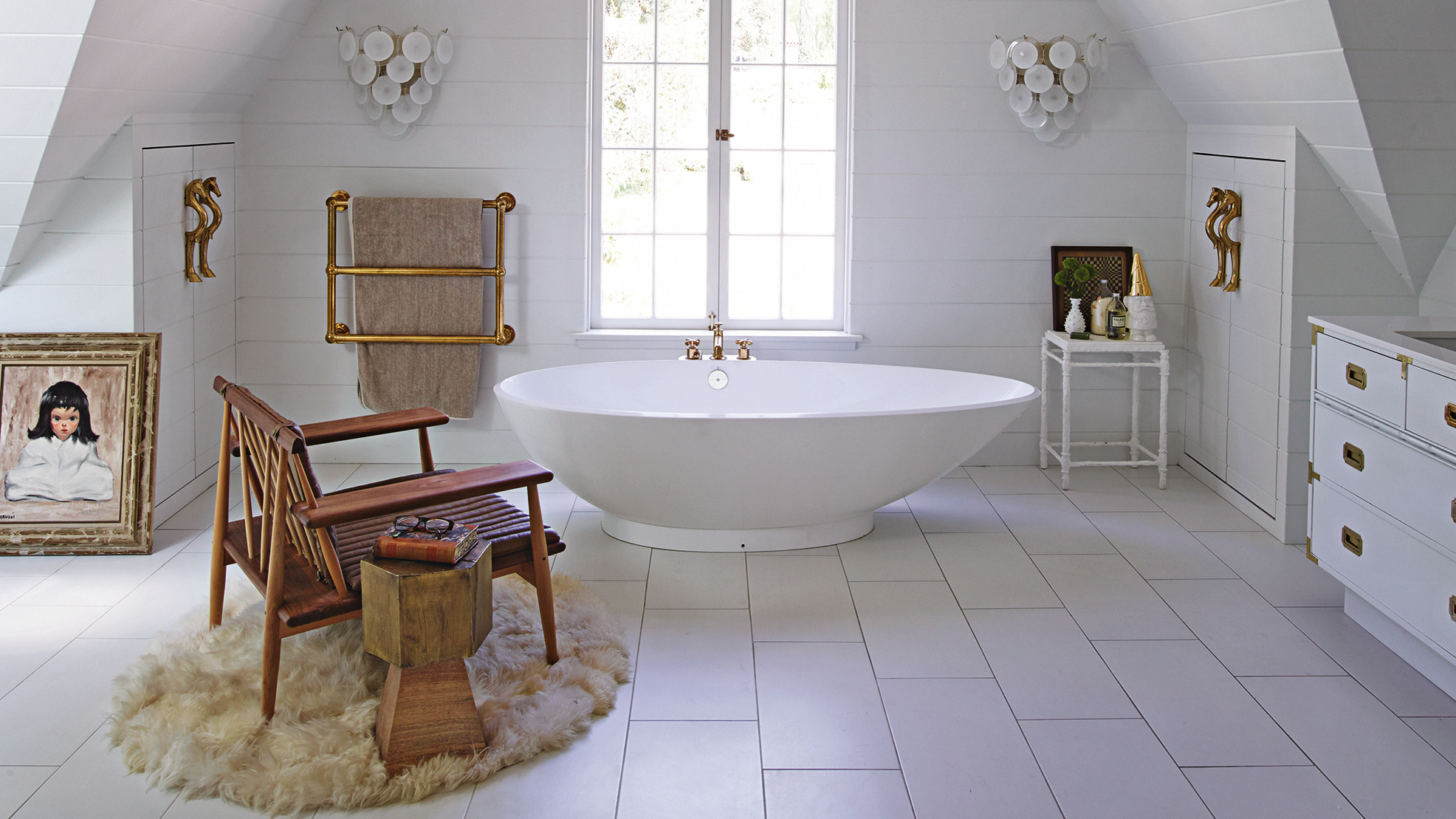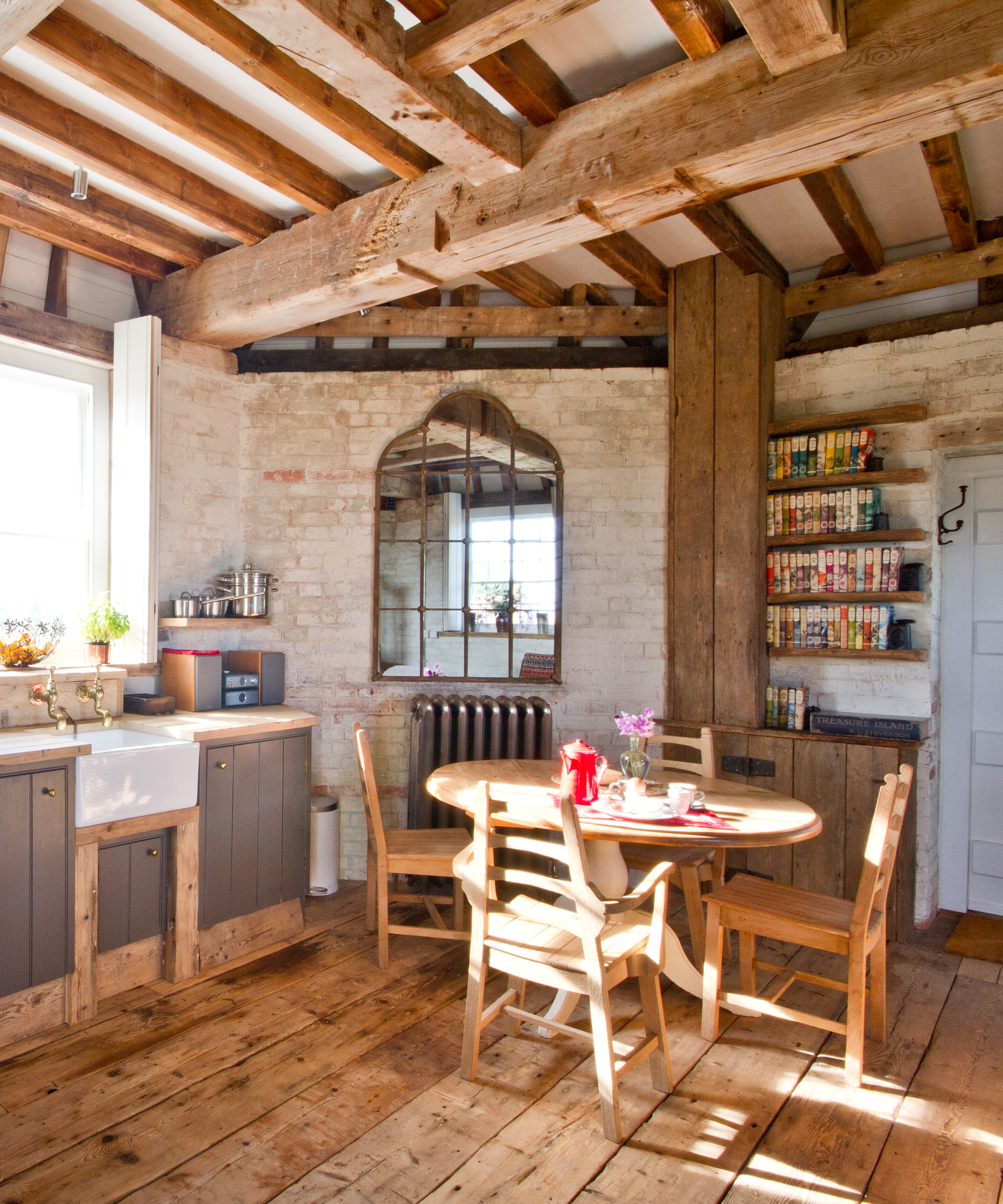How to hide a radiator - the expert guide to decorating tricks to help them blend in
Find out how to hide a radiator with this stylish look at ways to merge them into your decor


Knowing how to hide a radiator means that you have an essential decor trick up your sleeve. For there are some features of a household that you just have to learn to live with, and radiators are one of them. Although they are an essential item, radiators tend to be a bit clunky, making it difficult for them to seamlessly fit in with the rest of your decor.
So, we’ve asked some of our experts to give their advice on how best to hide your radiator as well as tips on how to tie it in with the rest of your room design. Read on for advice on paintwork, covers and how to make a radiator work with your decor.
1. How to hide a radiator

'When it comes to selecting a radiator there is no right or wrong,' says Gordon Riddoch, Managing Director of Rutland London. 'Some people prefer radiators in muted colours which blend into the existing wall colour. Paint colours from the likes of Farrow & Ball are perfect for muted, calming tones.'
'For those who love to make a statement, opting for radiators in contrasting or complimentary colours is key. We would recommend going one further and carrying the shade of the radiator through to other details in the space for a cohesive, intentional look.'
2. Paint the radiator the same shade as the walls

'Considering radiators properly as part of your interior space is essential and will ensure a cohesive, scheme,' says Ruth Mottershead, Creative Director of Little Greene. 'For a subtle, seamless finish, select the same shade for your radiators and walls by using ‘Baluster’ from our Stone collection on both.'
'There is no need to be slavish about this rule of matching the colour of the radiator to the wall, but instead finding a colour that is slightly lighter or darker can be ok too – this freedom allows us to choose an off-white from your chosen scheme and leave the radiator in its original powder-coated white - letting the others colours in the room do the talking.'
3. Hide the radiator under the desk

A very practical way of hiding your radiator is to place it under your desk. This is a great way of making sure the radiator doesn't take up too much space, especially if it's under a window as it is in this space.
The Livingetc newsletters are your inside source for what’s shaping interiors now - and what’s next. Discover trend forecasts, smart style ideas, and curated shopping inspiration that brings design to life. Subscribe today and stay ahead of the curve.
Placing a desk over the radiator is a very tidy solution and neatly closes it in without creating a clunky look. Simply paint the radiator in the same colour as your walls for a cohesive design.
4. Go for a stylish non-permanent screen

'Keep in mind that you can conceal your radiator without the cover being permanently installed,' says interior designer Leanne Ford who suggests using metal material for covers rather than wood and recommends leaving a space of 1.5 inches between the radiator and cover.
'In my guest house we used this vintage accordion style screen to cover the radiator in one of the bedrooms since it was the first thing you saw when you walked in the door.'
5. Opt for a traditional radiator cover

If you want to add an elegant touch to your radiator then go for a traditional cross front panel cover. Not only does the cover add some texture to the room, but it creates a clean and simple style that fits in with the decor.
Choose a white cover for a polished look.
6. Turn the radiator into a bedroom shelf

Turning your radiator into a useful display shelf is a very practical solution to the problem of unsightly radiators.
Simply install a white wooden radiator cover and use it for displaying books or ornaments. Add an oak top to the cover for a more elegant look.
7. Go for a contemporary style rail

If you've got the budget and want something more streamlined than a radiator, then why not splash out on a modern design towel rail.
In this space, the contemporary bronze painted rail fits in perfectly with the brass fittings and warm decor of the room.
8. Let the space determine the paint colour

When it comes to painting your radiator, it can be hard to decide whether to paint it the same as your walls, the floor or to go for a completely contrasting color.
'It depends on the space,' says interior designer Leanne Ford. 'In one of my projects from last season of Home Again with The Fords, we painted the radiator the same color as the floors since we painted the floors, but the other 99 per cent of the time I like to paint it the same color as the wall.'
9. Place a mirror above it

Placing a mirror above your radiator is a great way to make a feature of the wall above it and take the attention away from the radiator itself. It's also a very practical solution if your radiator lies in the centre of a room with lots of space surrounding it.
Make sure the radiator colour aligns with the mirror frame and the rest of the decor to create a cohesive look.
11. Create a bench for practicality

Having a radiator in an open space or the middle of a room is a great opportunity to create storage space or a room feature, such as the bench in this design.
Build a cover over your radiator and install an oak top to act as a bench. This is the perfect solution for a long radiator next to a window.
What should I consider when painting my radiator?

'Where possible, if you decide to paint the radiator, get your plumber to remove it whilst you paint it and lay it flat during the process to get a near perfect finish – the bonus of all this is that you have the opportunity to paint your wall colour behind where the radiator will hang too,' says Ruth Mottershead. 'However, if that isn't an option, painting in situ is also fine, just remember to protect your flooring with dust sheets and ensure it's turned off during the application process; careful preparation will make a difference between a botched job and a beautiful finish.'
'If your radiator has already been painted previously, smooth the surface with sandpaper to ensure the paint adheres to the surface. Thoroughly clean your radiator with a sponge and with sugar soap before allowing to dry completely.'
'To prevent any staining or rust that could affect your chosen shade, it's vital to prime your radiator; our Intelligent ASP is great for priming the surface for painting.'
How can I hide my radiator in my bedroom?
There are lots of ways to hide a radiator in the bedroom. One idea is to tuck it under your desk so that it is concealed from view and doesn’t take up too much space.
Another idea is to turn it into a bedroom shelf using a radiator cover. You can then use it as a display shelf or for storage. Why not hang a mirror above it and create a small dressing table area.
How can I cover a small radiator?
There are lots of ways you can cover a small radiator. You can use a range of materials from wood to aluminium to hide your small radiator. You could even add a small top shelf to create a place for storage or ornament display.
Is it safe to cover a radiator?
Yes, it is safe to cover a radiator provided you cover it with the correct materials and invest in a well-designed radiator cover. A good radiator cover should allow plenty of space for hot air to travel through rather than trap the heat.
'It's not dangerous to cover a radiator but you don't want to trap the heat inside,' says interior designer Leanne Ford. 'You will want to be sure to leave holes or spaces in the cover that are big enough for the heat to escape.'
How do you hide a bathroom radiator?
A great way to hide your bathroom radiator is to strategically place it in the room. For example, installing your radiator behind your bath will conceal it as the bath is a main feature of your bathroom.
You can also cover it with towels, blankets or other radiator covers so that it matches the rest of the decor.
Can I cover a radiator with a blanket?
Yes. It is safe to cover a radiator with a blanket, towel or sheet. However, synthetic materials, like polyester or fleece, should be kept away from radiators as they can melt.
Putting a blanket or sheet over your radiator is one way of limiting the amount of heat a radiator puts out into a room.
What can you put on top of a radiator?
You can put materials such as wood on top of a radiator to create a side table or a shelf. However, it’s important to consider that wood and water do not mix, so if your radiator leaks, this could impact the quality of the wood as it will expand and contract due to the heat.

Nicky Morris is a freelance journalist specialising in interiors and design. Covering everything from staircase lighting ideas to Ikea hacks to outdoor kitchens to tips for hiding radiators, she writes for Livingetc and Homes & Gardens and has previously written for Tempus Magazine. She also covers TV, and is currently the deputy TV and film editor at HELLO! Magazine.